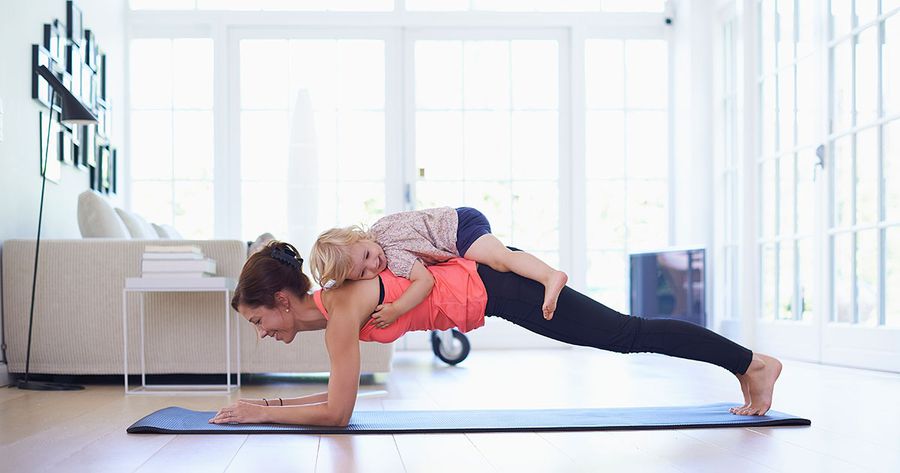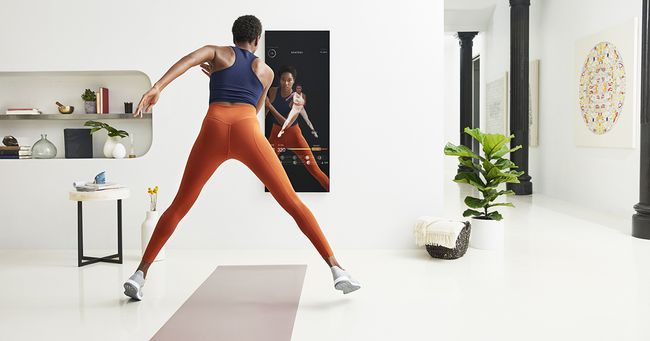
While the on-demand, at-home workout trend is not revolutionary (lest we forget bike shorts, over-the-pant thongs, and leg lifts à la Jane Fonda), experts think it's going way, way up from here. If you haven't started streaming workouts or brought some seriously techy exercise equipment into your home yet, that's all about to change. Here's why.
“When I get on my Peloton bike at home, I can get a little taste of Soul,” said Stevens. In addition to the Peloton bike, she also owns a ProForm treadmill (another on-demand coaching machine) and uses Tone It Up workouts and the SWEAT app to work out at home. “I can find snippets of time throughout the day to workout with an app or streamed video,” she told us. “A lot of fitness apps have options for shorter workouts as opposed to an hour-long studio class. It’s nice because I can let myself sleep in a little and still get in a 20- to 30-minute Peloton class, then find time in the evening to do 20 to 30 minutes of weight training!”
Judging by what she’s seen from her own followers and their interests, Stevens says she agrees that the at-home trend will continue to rise significantly in 2019. “I’ve noticed a wide variety of people love the option of being able to work out at home with on-demand videos-it appeals to an array of people for lots of different reasons,” she said. “Moms are able to save time by working out at home because they get to skip travel time to and from a local studio or gym, and it’s a great money-saver for college girls and young professionals too. Monthly studio packages can break the bank for some, but paying $15–25 a month for an app loaded with lots of different workout options isn’t really a big spend.”

4. Techy fitness brands are seeing serious growth.
Peloton unveiled their new $4,000 treadmill in early 2018. In the past year, they’ve become a $4 billion company and taken their subscriber base to 1 million. Though they’re perhaps the most identifiable brand in the space, they’re hardly the only one.
Tonal launched in 2018 out of the Bay Area. Founder Aly Orady (who reversed his diabetes and cured his sleep apnea with a daily fitness commitment) had an epiphany on a workout bench and created the "micro gym" that is Tonal to complete his entire workout regimen at home. The brand bolsters their electromagnetic weight system (one that eliminates the need for multiple pieces of equipment) with coaching programs that you'd typically get from a personal trainer. Letchford anticipates that 2019 will see the at-home trend not only be centered on on-demand workouts but specifically strength-training workouts.
She calls Tonal the “perfect complement” to the en vogue cardio machines of the moment. She’s right-the ProForms, the Pelotons, and Nordic Tracks are certainly fabulous, tech-forward home gym pieces, but they’re all cardio-centric. (FWIW, Peloton also offers strength-training boot camp classes as well as yoga, and the latest Nordic Track rower machine has on- and off-the-machine exercises.) In terms of delivering strength training (at this level and in this capacity), Letchford says “nothing else has come close to helping people bring the entire gym-your barbells, your strength machines, your dumbbells-home.”
MIRROR, another futuristic streaming device, takes sleek in-home fitness equipment even further: It's a digital mirror that displays live and on-demand workouts including cardio, strength, yoga, Pilates, barre, boxing, and stretching. It gets as close as possible to bringing a personal trainer into your home, without actually doing so: MIRROR also allows you to communicate with a trainer via built-in video microphone, making it a two-way communication training session, unlike most other platforms.
But perhaps you’re not ready to invest in home gym equipment-after all, Peloton, MIRROR, and Tonal’s machines will run you several thousand dollars. If you’re still looking for engaging, on-demand, and livestream workouts, there are tons of options now, and we anticipate there will be even more in the coming year.
"This coming year, in-home workouts will become more fun, more engaging, and more connected," said Letchford. "Instead of just watching a tape or streaming a live class, you will be able to interact in real time, get in-the-moment coaching cues and form adjustments."
